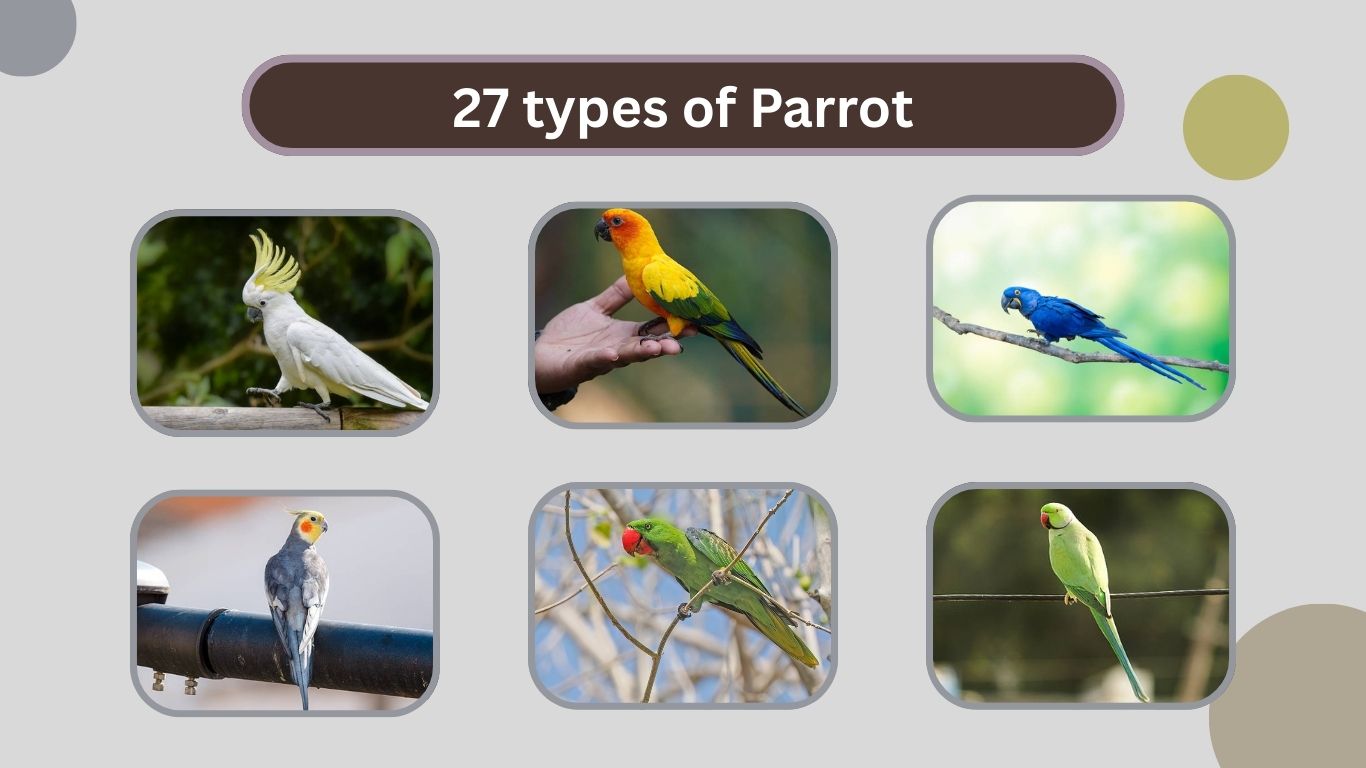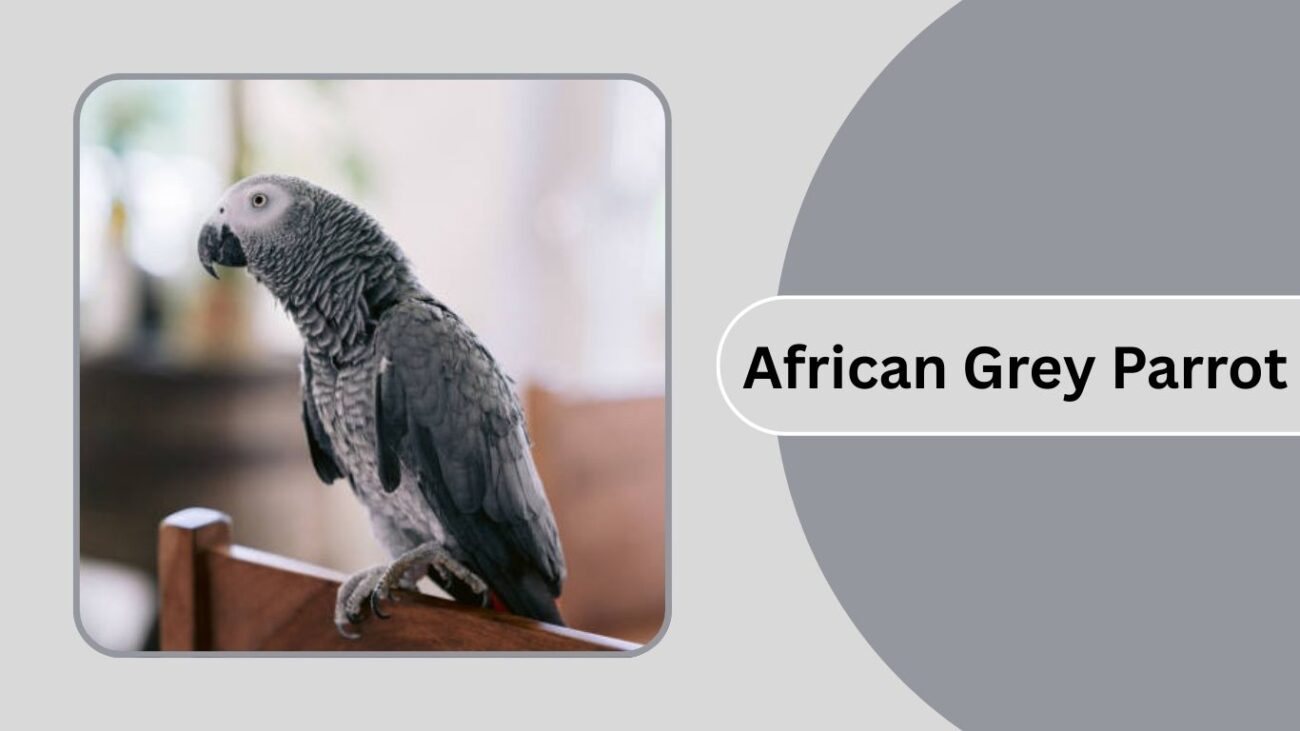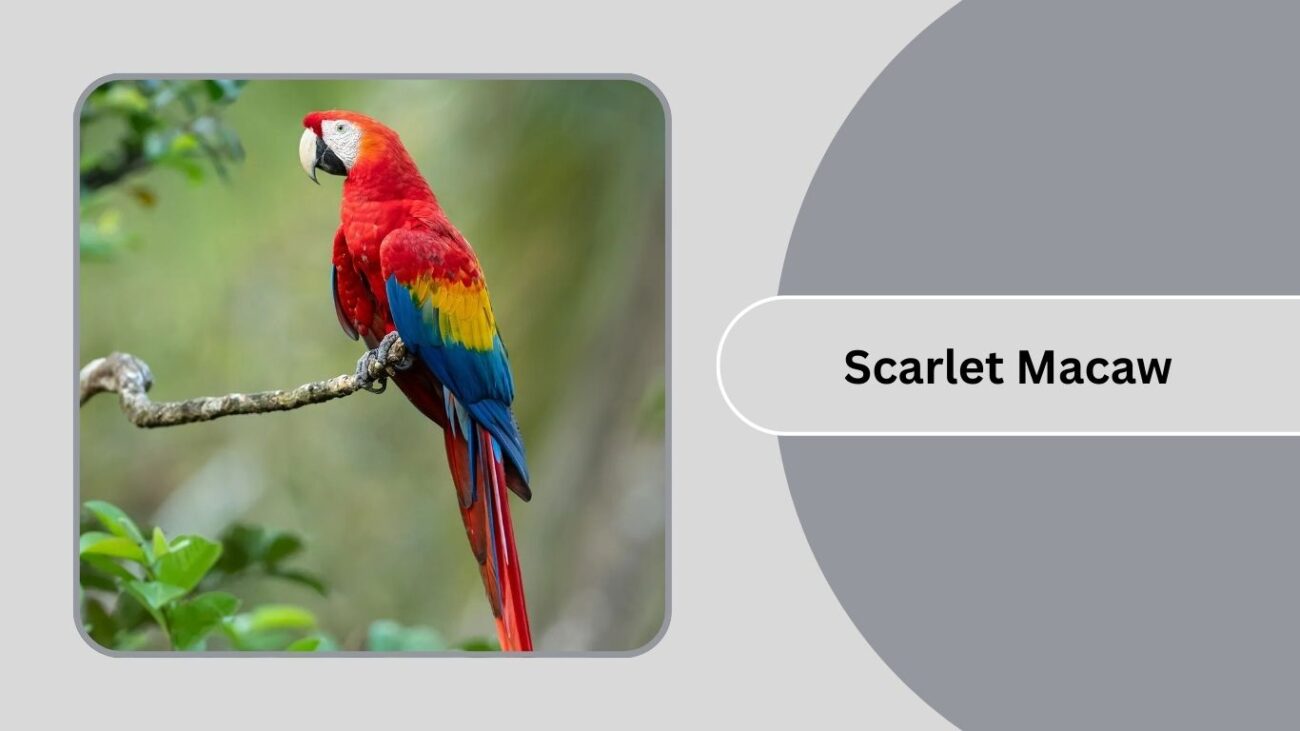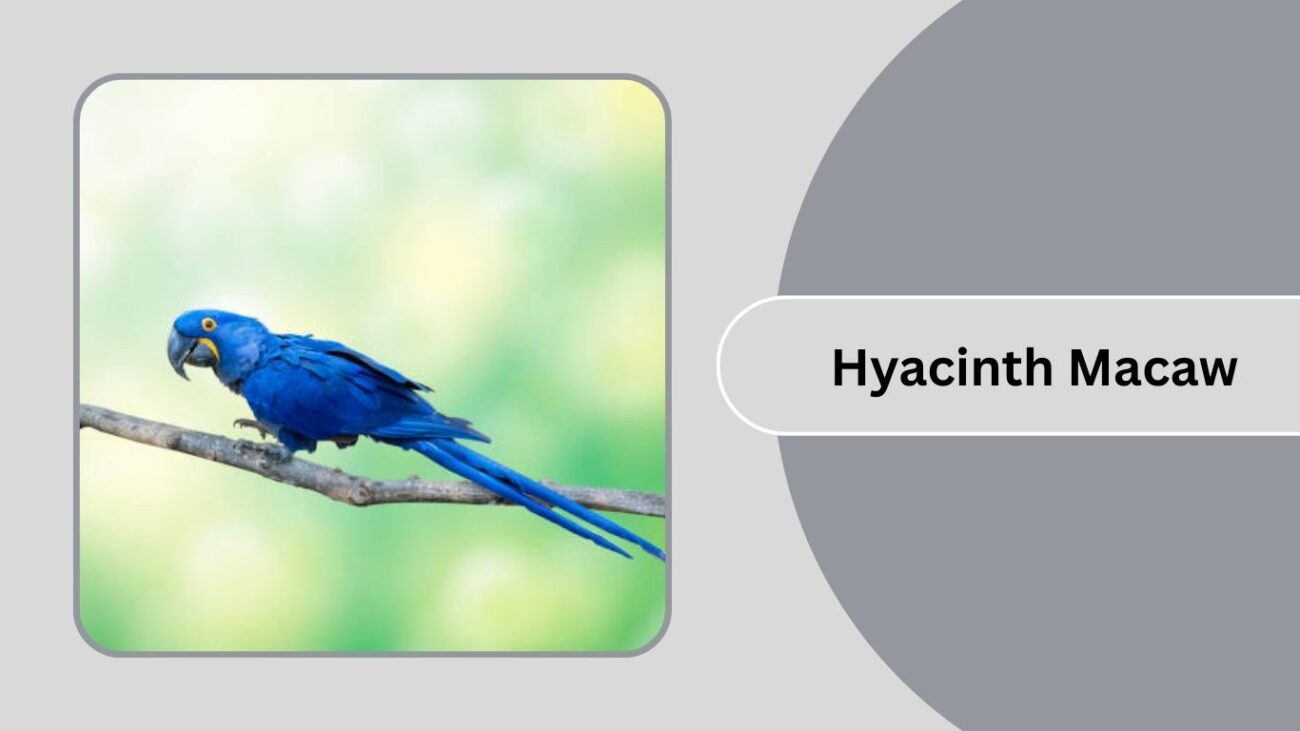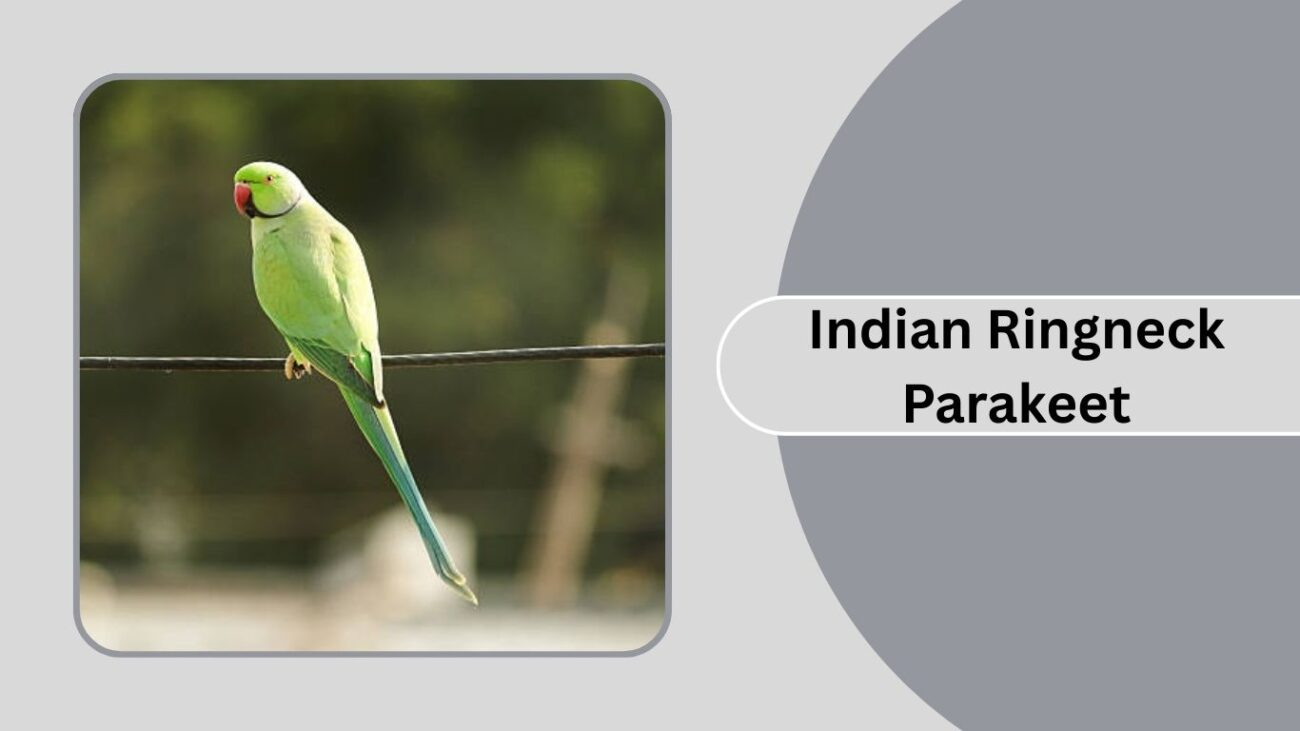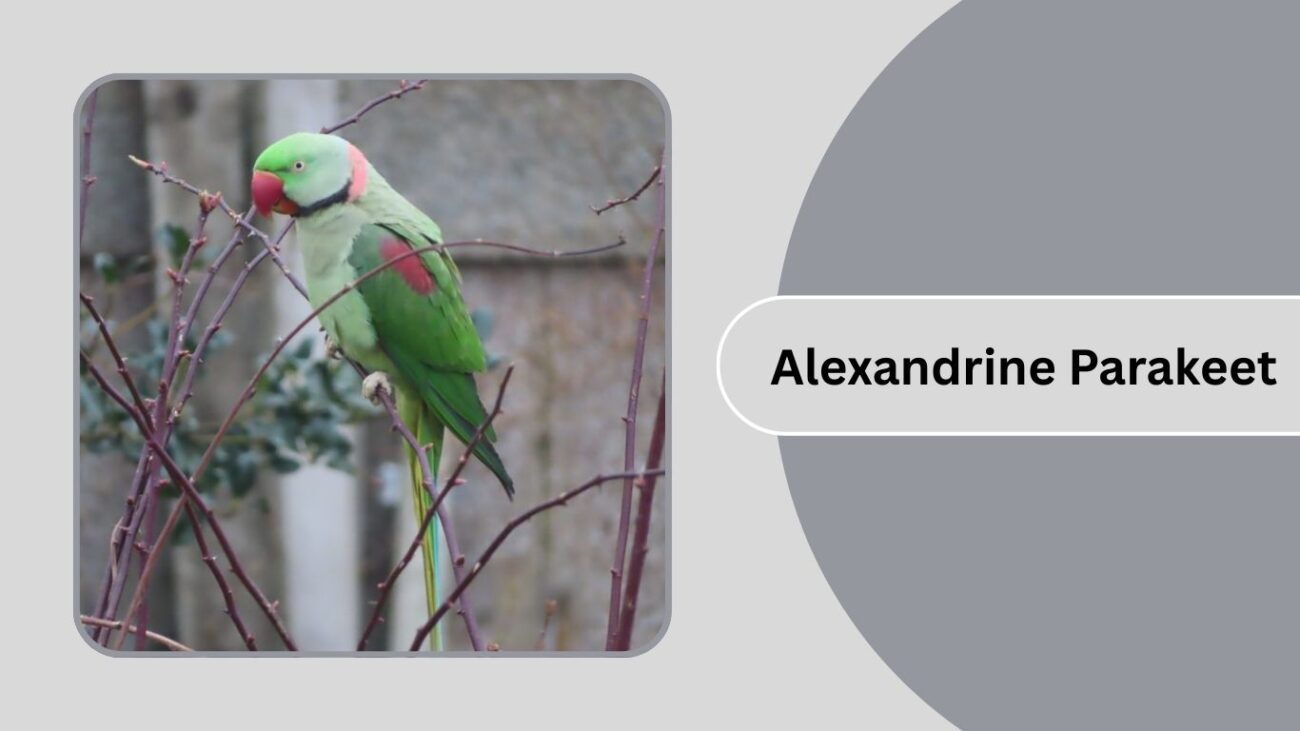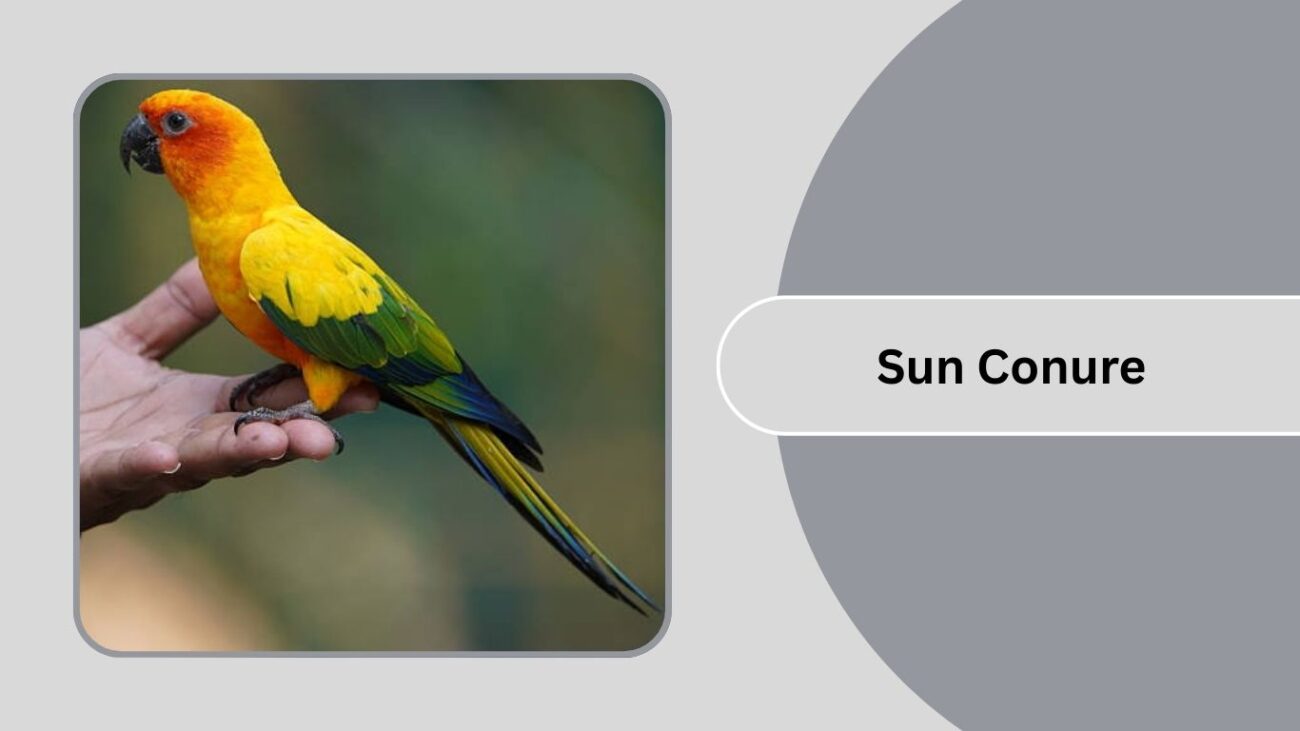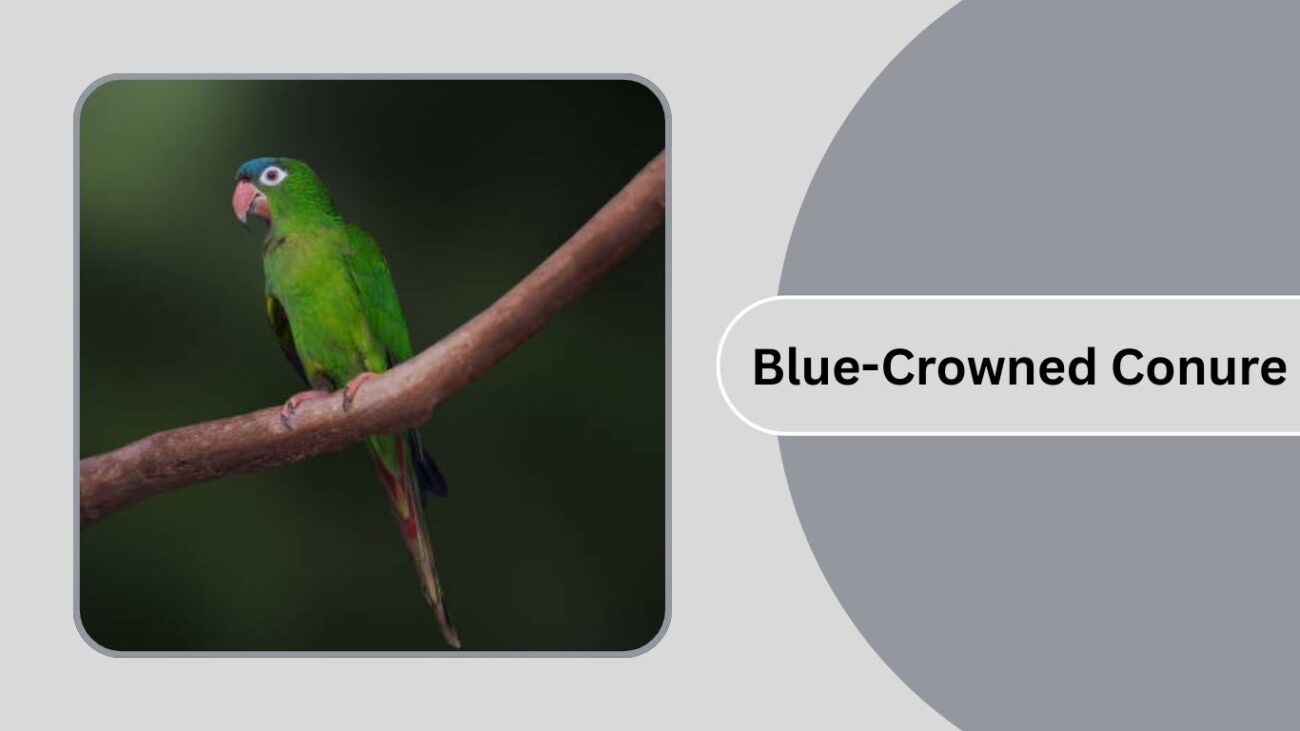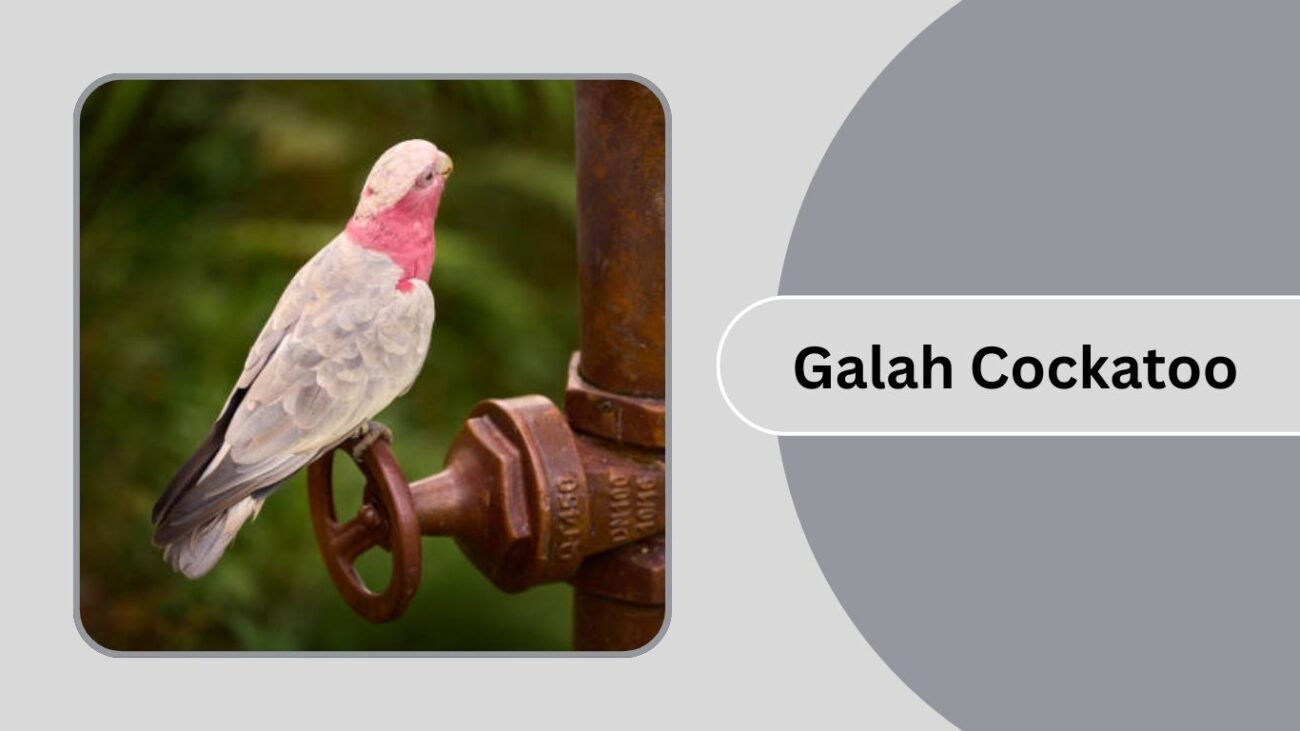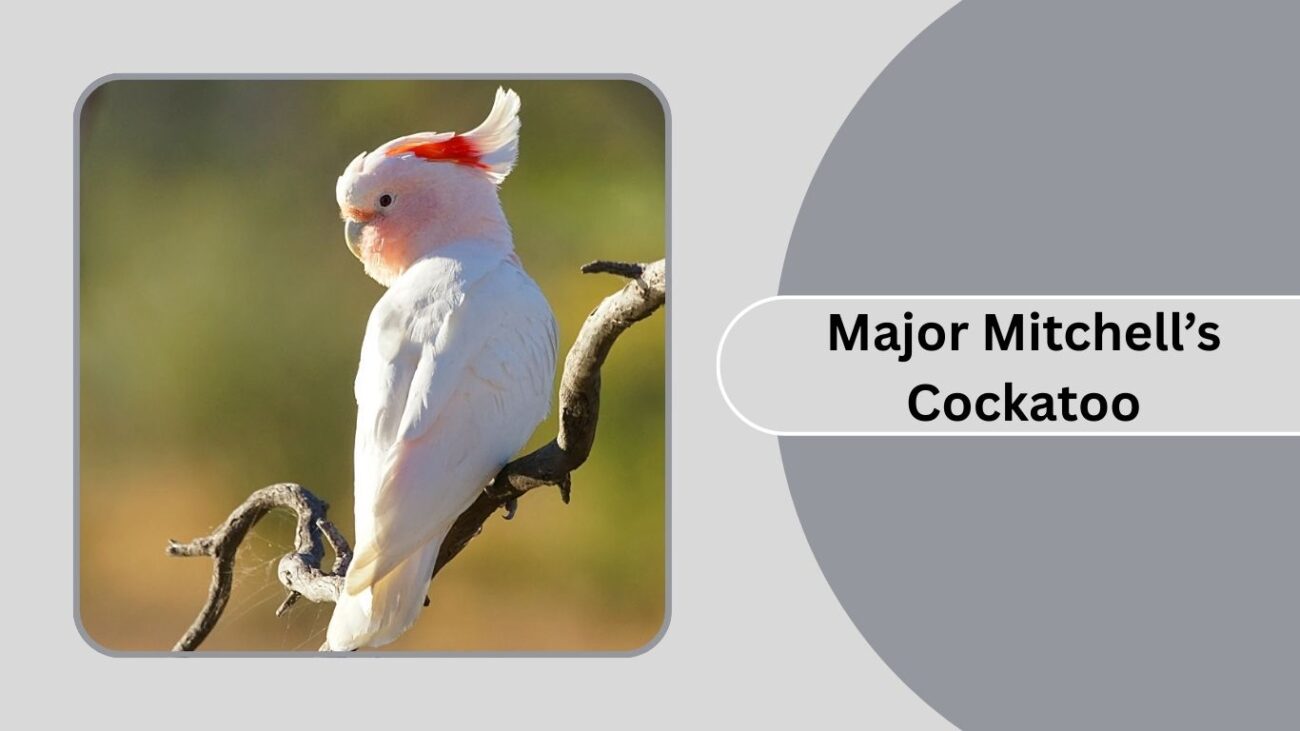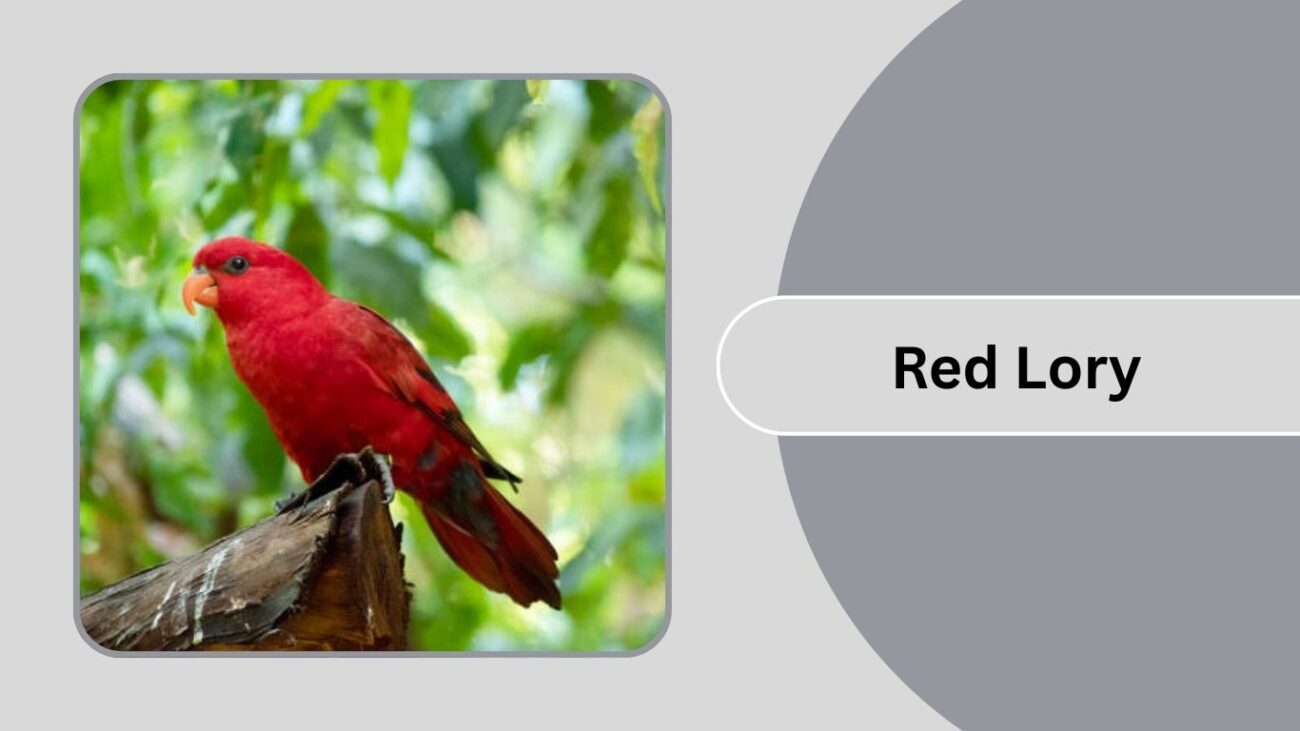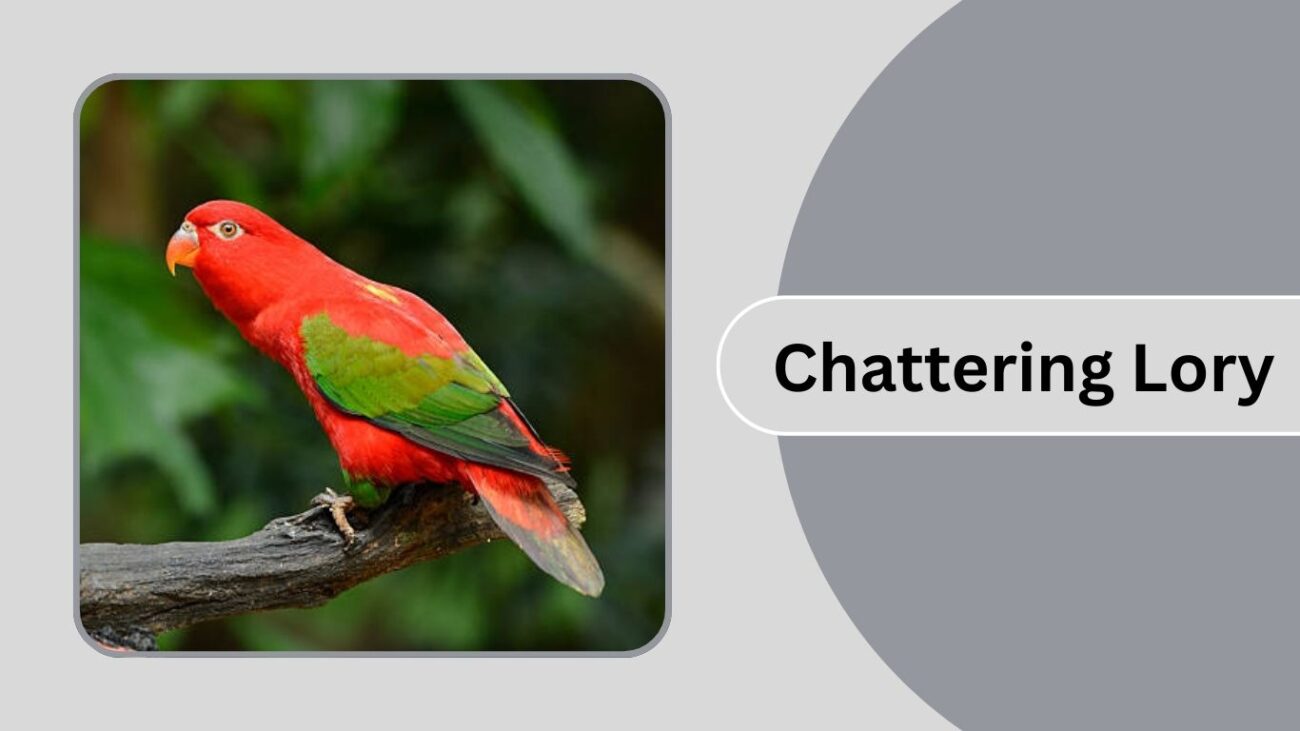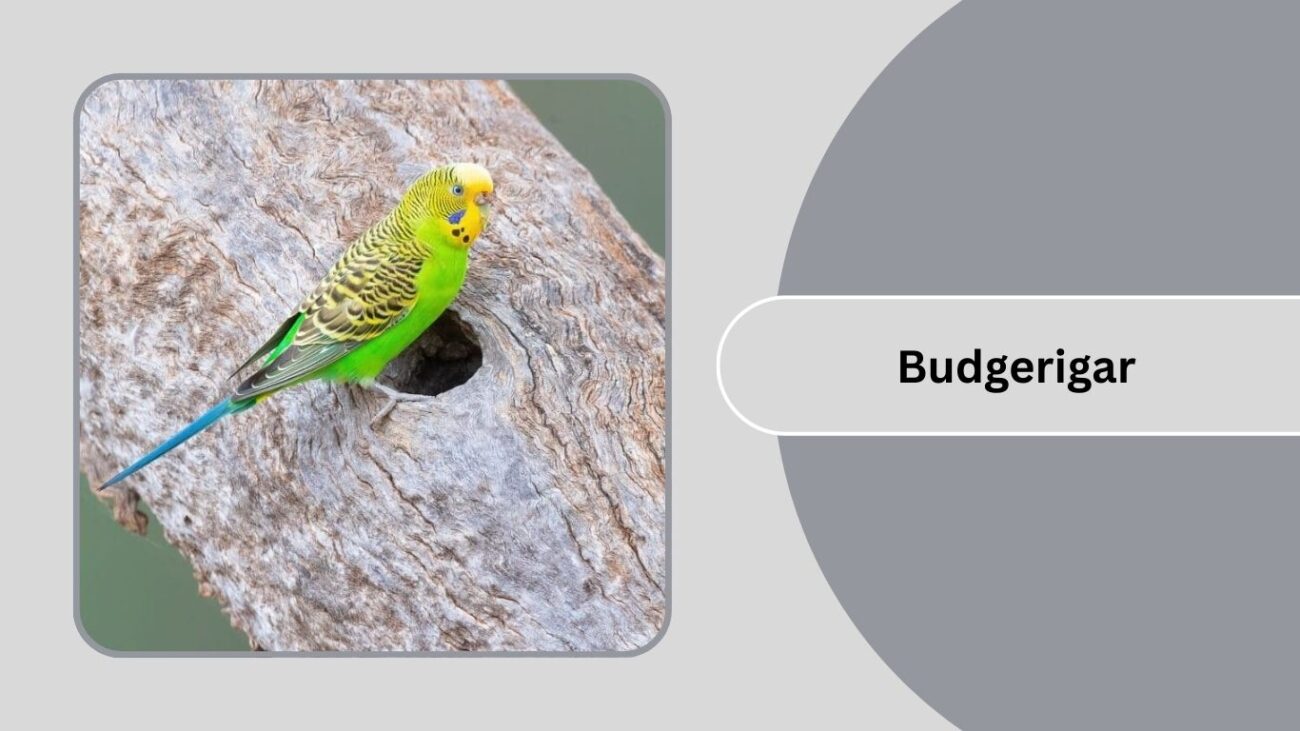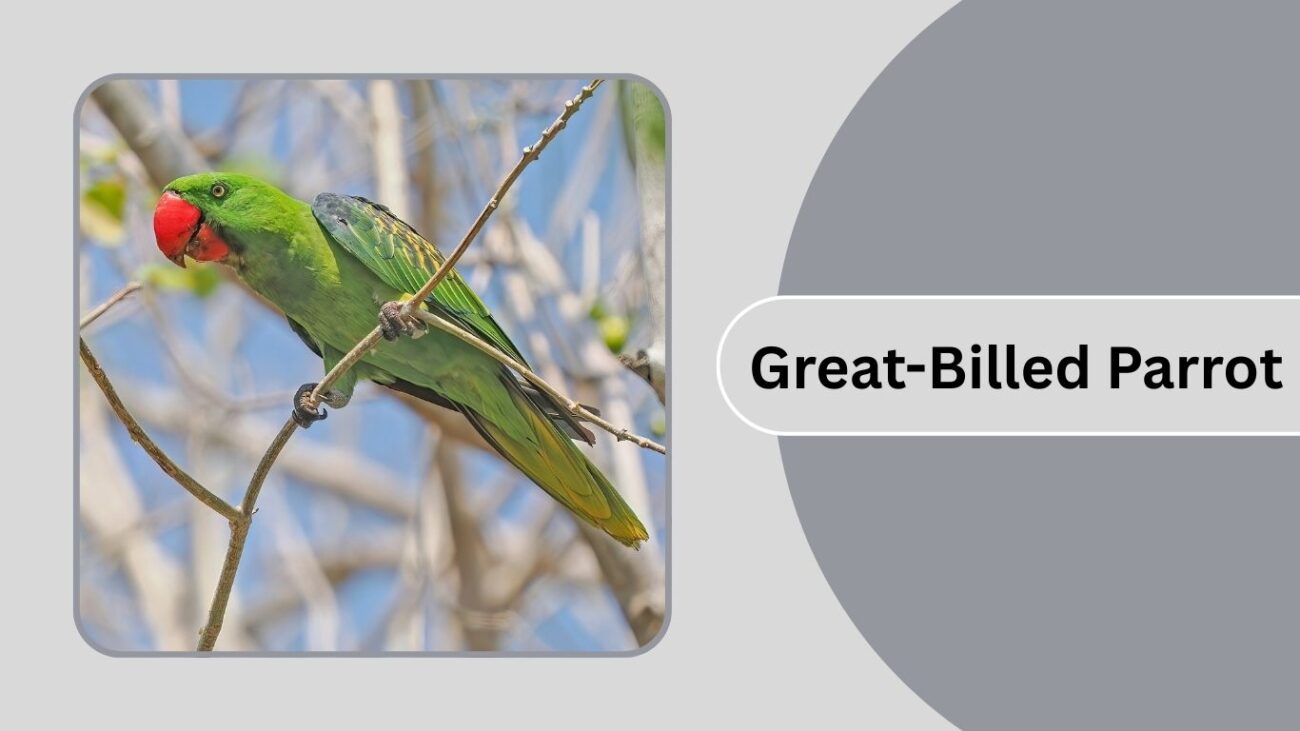Parrots are among the most colorful, intelligent, and social birds in the world, found across tropical and subtropical regions. With their remarkable vocal abilities, playful personalities, and striking plumage, parrots have captivated both bird lovers and researchers alike. This guide covers 27 distinct parrot species—from the tiny Budgerigar to the majestic Hyacinth Macaw—detailing their identification features, native habitats, and unique behaviors. Perfect for enthusiasts, pet owners, and avian admirers.
1. African Grey Parrot
The African Grey Parrot is one of the most intelligent and popular pet parrots in the world, renowned for its exceptional talking ability and cognitive skills. Native to the rainforests of West and Central Africa, this species forms strong bonds with owners and requires mental stimulation to thrive. They are often called the “Einstein of the bird world” due to their impressive problem-solving and communication abilities.
Identification
- Scientific Name: Psittacus erithacus
- Body Size: 30–40 cm (12–16 in)
- Color: Predominantly grey feathers with a bright red tail
- Beak: Strong, curved, black beak
- Eyes: Pale yellow in adults, dark grey in juveniles
Habitat and Distribution
African Grey Parrots inhabit dense forests, mangroves, and savannas across countries like Congo, Ghana, Cameroon, and Ivory Coast. They are also found in some coastal regions where food is plentiful.
Behavior and Diet
These parrots are highly social and form flocks in the wild. Their diet includes seeds, nuts, fruits, and leafy matter, often foraged from treetops. In captivity, a balanced diet of pellets, fresh produce, and occasional nuts is essential for their health.
2. Blue-and-Yellow Macaw
The Blue-and-Yellow Macaw is a large, vibrant parrot species recognized for its striking blue and golden-yellow plumage. Known for their playful nature and loud calls, these parrots are highly intelligent and social, making them popular in aviculture. In the wild, they are strong flyers and skillful foragers, often seen in pairs or small flocks.
Identification
- Scientific Name: Ara ararauna
- Body Size: 76–86 cm (30–34 in)
- Color: Bright blue wings and back, golden-yellow underparts, and green forehead
- Beak: Large, strong, black beak
- Eyes: Pale yellow surrounded by bare white facial skin with black feather lines
Habitat and Distribution
They inhabit forests, woodlands, and river edges across South America, particularly in countries like Brazil, Venezuela, Paraguay, and Bolivia. They are often spotted near water sources where food is abundant.
Behavior and Diet
Blue-and-Yellow Macaws are affectionate and bond strongly with their mates. They feed on seeds, nuts, fruits, and occasionally clay from riverbanks, which helps neutralize toxins from unripe seeds. In captivity, they require mental stimulation, foraging toys, and a varied diet to stay healthy.
3. Scarlet Macaw
The Scarlet Macaw is one of the most iconic and colorful parrots, known for its vivid red, yellow, and blue feathers. It is a highly intelligent and social bird that plays an important role in tropical forest ecosystems. With its striking appearance and loud calls, the Scarlet Macaw is both a symbol of the rainforest and a favorite among bird enthusiasts.
Identification
- Scientific Name: Ara macao
- Body Size: 81–96 cm (32–38 in)
- Color: Bright red body, yellow wing coverts, and blue wing tips and tail
- Beak: Strong, hooked beak—pale upper mandible, black lower mandible
- Eyes: Light yellow in adults, dark in juveniles
Habitat and Distribution
Scarlet Macaws inhabit tropical rainforests, humid lowlands, and river edges from Mexico through Central America to parts of South America, including Peru, Brazil, and Bolivia. They are often found in pairs or large flocks.
Behavior and Diet
These macaws are strong fliers and can travel long distances in search of food. They feed mainly on nuts, seeds, fruits, and sometimes clay from riverbanks to neutralize plant toxins. In captivity, they require a varied diet, mental enrichment, and plenty of space to fly.
4. Green-Winged Macaw
The Green-Winged Macaw is one of the largest parrot species and is often mistaken for the Scarlet Macaw due to their similar red plumage. However, it can be distinguished by the presence of green feathers on its wings and a larger body size. Known for its gentle temperament and strong pair bonds, it is a favorite among macaw enthusiasts.
Identification
- Scientific Name: Ara chloropterus
- Body Size: 90–95 cm (35–37 in)
- Color: Bright red body, green mid-wing feathers, and blue wing tips and tail
- Beak: Large, pale upper mandible with black lower mandible
- Eyes: Light yellow in adults, dark in juveniles
Habitat and Distribution
Green-Winged Macaws are found in tropical and subtropical rainforests, lowland forests, and river edges across northern and central South America, including Brazil, Venezuela, Bolivia, and Paraguay.
Behavior and Diet
They are intelligent, social birds that live in pairs or small flocks. Their diet consists mainly of seeds, nuts, fruits, and berries. They also consume clay from riverbanks to help neutralize toxins from certain seeds and plants. In captivity, they require mental enrichment and a spacious environment for exercise.
5. Hyacinth Macaw
The Hyacinth Macaw is the largest species of parrot in the world, both in length and wingspan. Known for its stunning cobalt-blue plumage and gentle personality, it is often referred to as the “gentle giant” of the macaw family. This majestic bird is highly sought after in aviculture but requires specialized care due to its size and diet.
Identification
- Scientific Name: Anodorhynchus hyacinthinus
- Body Size: 95–100 cm (37–40 in)
- Color: Deep cobalt-blue body with bright yellow skin around the eyes and beak
- Beak: Very large, strong, and black—capable of cracking hard nuts
- Eyes: Dark brown, surrounded by bare yellow skin
Habitat and Distribution
Hyacinth Macaws are native to parts of Brazil, Bolivia, and Paraguay. They inhabit palm-rich areas, woodland edges, and open forests, often near rivers or wetlands where food sources are abundant.
Behavior and Diet
They are intelligent, affectionate, and often form lifelong pair bonds. Their diet in the wild consists mainly of palm nuts, hard seeds, and fruits, with a specialized ability to crack extremely tough shells. In captivity, they require a diet rich in nuts, fresh produce, and formulated pellets, along with plenty of space to fly and exercise.
6. Eclectus Parrot
The Eclectus Parrot is famous for its striking sexual dimorphism—males and females look so different in color that they were once thought to be separate species. Males are bright green, while females are deep red and purple. This species is intelligent, calm, and known for its clear talking ability, making it a popular choice for experienced parrot owners.
Identification
- Scientific Name: Eclectus roratus
- Body Size: 35–40 cm (14–16 in)
- Color:
- Male: Vivid green with red underwings and orange beak
- Female: Rich red head and body, purple-blue chest, and black beak
- Male: Vivid green with red underwings and orange beak
- Beak: Strong and curved—orange in males, black in females
- Eyes: Orange-yellow in adults
Habitat and Distribution
Eclectus Parrots inhabit tropical rainforests, forest edges, and coastal mangroves in regions including New Guinea, northeastern Australia, the Solomon Islands, and surrounding islands.
Behavior and Diet
These parrots are calm and gentle but require social interaction and mental stimulation. They feed on fruits, nuts, seeds, berries, and blossoms in the wild. In captivity, their diet should include plenty of fresh fruits and vegetables, along with high-quality pellets and seeds.
7. Amazon Parrot
Amazon Parrots are medium to large-sized parrots known for their vibrant green plumage, expressive personalities, and excellent talking ability. They are intelligent, social, and often enjoy singing, making them popular pets for experienced bird owners. Their strong bonds with humans mean they require plenty of interaction and mental stimulation.
Identification
- Scientific Name: Amazona spp. (over 30 species)
- Body Size: 30–38 cm (12–15 in) depending on species
- Color: Predominantly green with colorful markings on the head, wings, or tail—varies by species
- Beak: Strong, curved, dark or horn-colored beak
- Eyes: Orange, yellow, or brown depending on age and species
Habitat and Distribution
Amazon Parrots are native to Central and South America, as well as the Caribbean. They inhabit tropical forests, woodlands, and savanna regions, often staying close to water sources and fruiting trees.
Behavior and Diet
They are playful, vocal, and intelligent, capable of mimicking speech and singing tunes. In the wild, they eat fruits, seeds, nuts, berries, and flowers. In captivity, a balanced diet of pellets, fresh produce, and limited seeds is essential to prevent obesity and health issues.
8. Indian Ringneck Parakeet
The Indian Ringneck Parakeet is a medium-sized parrot known for its striking colors, playful personality, and remarkable talking ability. These parrots are highly intelligent, curious, and active, which makes them engaging companions for experienced bird keepers. They are easily recognized by the distinctive ring around the neck of adult males.
Identification
- Scientific Name: Psittacula krameri manillensis
- Body Size: 40–42 cm (16–17 in), including the long tail
- Color: Bright green body, with males displaying a black and rose-colored neck ring; various color mutations also exist (blue, yellow, albino, etc.)
- Beak: Bright red, slightly curved beak
- Eyes: Pale yellow in adults, dark in juveniles
Habitat and Distribution
They are native to India, Pakistan, Sri Lanka, and parts of Southeast Asia. These parakeets inhabit forests, woodlands, agricultural lands, and urban gardens, adapting well to different environments.
Behavior and Diet
Indian Ringneck Parakeets are vocal, energetic, and capable of learning a large vocabulary with clear speech. In the wild, they feed on fruits, seeds, flowers, and nectar. In captivity, they thrive on a diet of pellets, fresh fruits, vegetables, and occasional nuts.
9. Alexandrine Parakeet
The Alexandrine Parakeet is one of the largest species of parakeet, admired for its graceful appearance, long tail feathers, and impressive intelligence. They are closely related to the Indian Ringneck Parakeet but are larger and have distinct plumage features. Known for their playful nature and talking ability, they make captivating companions for experienced bird owners.
Identification
- Scientific Name: Psittacula eupatria
- Body Size: 58–62 cm (23–24 in), including the long tail
- Color: Bright green body, maroon shoulder patches, and a bluish sheen on the cheeks; males have a black-and-pink neck ring
- Beak: Large, strong, and red with a yellow tip
- Eyes: Pale yellow in adults, dark in juveniles
Habitat and Distribution
Alexandrine Parakeets are native to South and Southeast Asia, including India, Pakistan, Sri Lanka, Myanmar, and parts of Thailand, Cambodia, and Vietnam. They inhabit forests, open woodlands, farmlands, and urban gardens.
Behavior and Diet
These parakeets are active, social, and highly intelligent. They form strong pair bonds and can mimic human speech with practice. In the wild, their diet consists of seeds, nuts, fruits, flowers, and buds. In captivity, a varied diet of pellets, fresh fruits, vegetables, and limited seeds keeps them healthy and vibrant.
10. Quaker Parrot (Monk Parakeet)
The Quaker Parrot, also known as the Monk Parakeet, is a small but lively parrot species famous for its bright personality, intelligence, and talking ability. Unlike most parrots, Quakers build large, communal stick nests, making them unique among their kind. They are playful, social, and adapt well to both wild and captive environments.
Identification
- Scientific Name: Myiopsitta monachus
- Body Size: 28–30 cm (11–12 in)
- Color: Bright green body, pale grey forehead, cheeks, and breast with green-blue wing feathers
- Beak: Curved, pale horn-colored beak
- Eyes: Dark brown with a white eye-ring
Habitat and Distribution
Quaker Parrots are native to temperate and subtropical regions of South America, including Argentina, Brazil, and Paraguay. They have also established wild populations in parts of North America, Europe, and Asia due to escapes and releases.
Behavior and Diet
Highly social and active, Quakers are excellent mimics and can learn a wide vocabulary. In the wild, they live in large colonies and feed on seeds, fruits, berries, and vegetation. In captivity, they require a varied diet of pellets, fresh produce, and small amounts of seeds, along with plenty of toys and interaction to prevent boredom.
11. Sun Conure
The Sun Conure is a small to medium-sized parrot admired for its brilliant orange, yellow, and green plumage. These birds are lively, affectionate, and known for their loud, high-pitched calls. They are highly social and thrive in environments where they receive regular attention and interaction.
Identification
- Scientific Name: Aratinga solstitialis
- Body Size: 30 cm (12 in)
- Color: Bright yellow and orange body with green flight feathers and blue tail tips
- Beak: Black, strong, and slightly curved
- Eyes: Dark brown with a white eye-ring
Habitat and Distribution
Sun Conures are native to northeastern South America, particularly in regions of Guyana, Brazil, and Venezuela. They inhabit tropical forests, savannas, and coastal woodlands, often traveling in small flocks.
Behavior and Diet
These conures are playful, affectionate, and very active, requiring plenty of toys and stimulation. In the wild, they feed on fruits, seeds, nuts, flowers, and occasionally insects. In captivity, they thrive on a balanced diet of pellets, fresh fruits, vegetables, and some seeds.
12. Jenday Conure
The Jenday Conure is a vibrant and affectionate parrot, closely related to the Sun Conure. It is known for its striking coloration, playful energy, and strong social nature. These birds form strong bonds with their owners and thrive on daily interaction.
Identification
- Scientific Name: Aratinga jandaya
- Body Size: 30 cm (12 in)
- Color: Bright orange head and upper chest, yellow body, and green wings with blue flight feathers
- Beak: Black, curved, and strong
- Eyes: Dark brown with a white eye-ring
Habitat and Distribution
Native to northeastern Brazil, Jenday Conures inhabit forest edges, savannas, and woodland areas. They are often found in small flocks and sometimes join mixed groups with other conure species.
Behavior and Diet
Jenday Conures are intelligent, curious, and very active. They enjoy foraging, climbing, and social play. In the wild, they feed on seeds, fruits, berries, nuts, and flowers. In captivity, they require a varied diet of pellets, fresh fruits, vegetables, and occasional seeds, along with mental stimulation to prevent boredom.
13. Green-Cheeked Conure
The Green-Cheeked Conure is a small, playful parrot known for its affectionate personality and relatively quiet nature compared to other conures. These birds are highly social, intelligent, and enjoy engaging in interactive play, making them a favorite among bird enthusiasts.
Identification
- Scientific Name: Pyrrhura molinae
- Body Size: 26 cm (10 in)
- Color: Green body, maroon tail, greyish head, and blue flight feathers with a splash of red on the belly
- Beak: Black, slightly curved
- Eyes: Dark brown with a white eye-ring
Habitat and Distribution
Native to South America, particularly in Brazil, Bolivia, Argentina, and Paraguay, Green-Cheeked Conures inhabit forests, woodlands, and forest edges. They are often seen in small flocks, sometimes mixed with other parakeets.
Behavior and Diet
These conures are affectionate and playful, often forming strong bonds with their owners. They enjoy climbing, chewing, and learning tricks. In the wild, they feed on seeds, fruits, berries, and flowers. In captivity, a varied diet of pellets, fresh fruits, vegetables, and occasional seeds ensures good health.
14. Blue-Crowned Conure
The Blue-Crowned Conure is a medium-sized parrot known for its striking blue head and lively, affectionate personality. These birds are intelligent, active, and have a reputation for being relatively quiet compared to other conures, making them suitable for dedicated bird keepers who want a playful yet less noisy companion.
Identification
- Scientific Name: Thectocercus acuticaudatus
- Body Size: 37 cm (14.5 in)
- Color: Green body with a bright blue crown and face, red feathers under the tail, and blue flight feathers
- Beak: Black, strong, and slightly curved
- Eyes: Dark brown with a white eye-ring
Habitat and Distribution
Native to South America, Blue-Crowned Conures are found in countries such as Venezuela, Colombia, Argentina, and Brazil. They inhabit dry forests, savannas, shrublands, and open woodland areas, often forming flocks outside of breeding season.
Behavior and Diet
Blue-Crowned Conures are affectionate, curious, and intelligent, often enjoying interactive play and foraging activities. In the wild, they feed on seeds, fruits, berries, and flowers. In captivity, they thrive on a diet of pellets, fresh fruits, vegetables, and occasional nuts, along with plenty of enrichment to keep them mentally engaged.
15. Cockatiel
The Cockatiel is a small, friendly parrot species known for its charming crest, affectionate personality, and whistling ability. They are one of the most popular pet birds in the world due to their gentle nature, manageable size, and adaptability to different home environments.
Identification
- Scientific Name: Nymphicus hollandicus
- Body Size: 30–33 cm (12–13 in) including the tail
- Color: Wild type has grey body, yellow face with orange cheek patches; many color mutations exist (lutino, pied, pearl, etc.)
- Beak: Pale grey and slightly curved
- Eyes: Dark brown in most color varieties
Habitat and Distribution
Cockatiels are native to Australia, where they inhabit open woodlands, grasslands, and scrublands. They are often seen in flocks, especially near water sources, and may travel long distances in search of food.
Behavior and Diet
These birds are affectionate, social, and often enjoy human interaction. They are excellent whistlers and can learn tunes and mimic simple sounds. In the wild, they feed on seeds, grains, and vegetation. In captivity, a balanced diet of pellets, fresh vegetables, fruits, and seeds supports their health and longevity.
16. Cockatoo
Cockatoos are a diverse group of medium to large parrots known for their expressive crests, loud calls, and affectionate yet sometimes demanding personalities. They are intelligent, social birds that require significant interaction, making them best suited for experienced bird owners.
Identification
- Scientific Name: Family Cacatuidae (21 species)
- Body Size: 30–60 cm (12–24 in) depending on species
- Color: Typically white, pink, grey, or black with a striking movable crest; some species have bright yellow or red highlights
- Beak: Strong, curved, and adapted for cracking nuts and seeds
- Eyes: Dark brown or black; some females have reddish-brown eyes
Habitat and Distribution
Cockatoos are native to Australia, New Guinea, and nearby islands. They inhabit forests, woodlands, grasslands, and even urban parks, often forming large, noisy flocks.
Behavior and Diet
Highly intelligent and social, cockatoos can mimic sounds, perform tricks, and form deep bonds with humans. They require plenty of toys and activities to prevent boredom. In the wild, they eat seeds, nuts, fruits, roots, and occasionally insects. In captivity, they need a varied diet of pellets, fresh produce, and limited seeds to stay healthy.
17. Galah Cockatoo
The Galah Cockatoo, also known as the Rose-Breasted Cockatoo, is one of the most recognizable cockatoos due to its striking pink and grey plumage. These birds are playful, highly social, and known for their acrobatics and energetic personalities. They are popular in aviculture and are considered excellent companions for owners who can meet their active and social needs.
Identification
- Scientific Name: Eolophus roseicapilla
- Body Size: 35 cm (14 in)
- Color: Soft pink chest and face, light grey wings and back, with a pale pink movable crest
- Beak: Light horn-colored, strong, and slightly curved
- Eyes: Dark brown in males, reddish-brown in females
Habitat and Distribution
Galah Cockatoos are native to Australia and are found across most of the continent, from open woodlands to grasslands and even urban areas. They are highly adaptable and often travel in large, noisy flocks.
Behavior and Diet
These cockatoos are intelligent, affectionate, and love to play, often performing flips and hanging upside down. In the wild, they feed on seeds, grasses, berries, and nuts, sometimes foraging on the ground. In captivity, they thrive on a diet of pellets, fresh vegetables, fruits, and small amounts of seeds, along with plenty of toys and social interaction to keep them mentally stimulated.
18. Major Mitchell’s Cockatoo
Major Mitchell’s Cockatoo, also known as the Leadbeater’s Cockatoo, is considered one of the most beautiful cockatoo species due to its soft pink plumage and striking, multicolored crest. Known for their gentle yet sometimes shy nature, they are highly intelligent and require significant interaction and mental stimulation.
Identification
- Scientific Name: Lophochroa leadbeateri
- Body Size: 35–40 cm (14–16 in)
- Color: Soft pink body with white wings and back; crest has bands of yellow and red framed by white
- Beak: Pale horn-colored, short, and curved
- Eyes: Dark brown in males, reddish-brown in females
Habitat and Distribution
These cockatoos are native to the arid and semi-arid inland regions of Australia. They are commonly found in open woodlands, along watercourses, and in areas with eucalyptus trees, which provide both food and nesting sites.
Behavior and Diet
Major Mitchell’s Cockatoos are affectionate, social, and known for forming strong pair bonds. They often engage in elaborate courtship displays using their colorful crests. In the wild, they feed on seeds, nuts, berries, and roots, often foraging on the ground. In captivity, they thrive on a diet of pellets, fresh fruits, vegetables, and limited seeds, along with daily enrichment activities to keep them mentally and physically healthy.
19. Red-Tailed Black Cockatoo
The Red-Tailed Black Cockatoo is a large and striking parrot species, easily recognized by its glossy black plumage and vivid red tail panels. Known for their powerful beaks and distinctive calls, these birds are a symbol of the Australian outback and are highly admired for their beauty and grace in flight.
Identification
- Scientific Name: Calyptorhynchus banksii
- Body Size: 55–65 cm (22–26 in)
- Color: Males are black with bright red tail bands; females are dark brown with yellow spots and barring, and orange-yellow tail bands
- Beak: Strong, curved, pale grey beak
- Eyes: Dark brown in both sexes
Habitat and Distribution
They are native to Australia and are found in a variety of habitats including eucalyptus woodlands, forests, and savannas. Their range extends across northern, eastern, and western parts of the continent, depending on the subspecies.
Behavior and Diet
Red-Tailed Black Cockatoos are social birds, often seen in pairs or small flocks. They have a powerful beak capable of cracking hard seeds and nuts, particularly from eucalyptus and she-oak trees. In the wild, their diet consists mainly of seeds, nuts, and occasionally fruits. In captivity, they require a varied diet of pellets, fresh produce, and suitable nuts, along with ample space for flight and exercise.
20. Rainbow Lorikeet
The Rainbow Lorikeet is a brightly colored, energetic parrot known for its vibrant plumage and playful nature. These birds are highly social, noisy, and active, often seen darting through trees in search of nectar. Their stunning coloration makes them one of the most recognizable parrots in Australia.
Identification
- Scientific Name: Trichoglossus moluccanus
- Body Size: 25–30 cm (10–12 in)
- Color: Bright blue head and belly, green wings, tail, and back, with an orange-yellow breast and red beak
- Beak: Short, curved, and orange-red in color
- Eyes: Reddish-orange in adults
Habitat and Distribution
Rainbow Lorikeets are native to Australia and eastern Indonesia. In Australia, they are commonly found along the eastern seaboard, inhabiting rainforests, coastal bushlands, and urban gardens with flowering plants.
Behavior and Diet
These lorikeets are energetic, noisy, and highly social, often flying in pairs or flocks. They have a specialized brush-tipped tongue for feeding on nectar and pollen from flowers, but they also consume fruits, berries, and occasionally seeds. In captivity, they require a nectar-based diet, supplemented with fresh fruits and vegetables, to maintain their health and vibrant colors.
21. Red Lory
The Red Lory is a medium-sized parrot known for its striking crimson plumage and energetic, playful behavior. These birds are highly social, intelligent, and require a lot of interaction and stimulation. Their specialized diet and high activity level make them best suited for experienced bird keepers.
Identification
- Scientific Name: Eos bornea
- Body Size: 30 cm (12 in)
- Color: Bright red body with patches of blue and black on the wings and back; orange beak
- Beak: Short, curved, and orange in color
- Eyes: Reddish-orange in adults
Habitat and Distribution
Red Lories are native to the Maluku Islands in Indonesia. They inhabit tropical forests, mangroves, and coastal woodlands, often found in flowering trees where food is abundant.
Behavior and Diet
These lorikeets are lively, affectionate, and noisy, often seen playing and interacting in pairs or flocks. They feed mainly on nectar and pollen, using their brush-tipped tongues, but also enjoy fruits and berries. In captivity, they require a nectar-based diet, supplemented with fresh fruits and vegetables, and plenty of toys to satisfy their curiosity and high energy levels.
22. Chattering Lory
The Chattering Lory is a stunning, medium-sized parrot famous for its vivid red plumage and lively, vocal nature. These birds are intelligent, playful, and require plenty of attention and enrichment, making them best suited for experienced bird keepers who can meet their high-energy needs.
Identification
- Scientific Name: Lorius garrulus
- Body Size: 30 cm (12 in)
- Color: Bright red body with green wings, yellow shoulders, and a red-orange beak
- Beak: Curved, sturdy, and orange in color
- Eyes: Orange or reddish-brown in adults
Habitat and Distribution
Chattering Lories are native to North Maluku, Indonesia, where they inhabit tropical and subtropical forests, mangroves, and coastal woodlands. They are most often found in flowering and fruiting trees, sometimes traveling in small flocks.
Behavior and Diet
These lorikeets are social, energetic, and known for their loud, repetitive calls—hence the name “Chattering” Lory. They feed primarily on nectar and pollen, using their specialized brush-tipped tongues, but also enjoy fruits and berries. In captivity, they require a nectar-based diet, supplemented with fresh fruits and vegetables, and a stimulating environment to prevent boredom and behavioral issues.
23. Budgerigar (Budgie)
The Budgerigar, commonly known as the Budgie or Parakeet, is one of the smallest parrot species and among the most popular pet birds in the world. Loved for their playful personalities, ease of care, and wide range of colors, budgies are an excellent choice for both beginner and experienced bird owners.
Identification
- Scientific Name: Melopsittacus undulatus
- Body Size: 18 cm (7 in)
- Color: Wild type is green with black barring on the back and wings; captive-bred varieties include blue, yellow, white, and many other mutations
- Beak: Small, curved, and horn-colored
- Eyes: Dark brown in young birds, turning grey or white in adults
Habitat and Distribution
Budgerigars are native to the arid and semi-arid regions of Australia, where they live in large flocks and migrate in search of food and water. They inhabit grasslands, scrublands, and lightly wooded areas.
Behavior and Diet
Budgies are social, active, and capable of learning words and short phrases. They thrive on interaction and mental stimulation, especially when kept in pairs or groups. In the wild, they feed mainly on grass seeds, but in captivity, they require a balanced diet of pellets, fresh vegetables, fruits, and some seeds to maintain optimal health.
24. Lovebird
Lovebirds are small, colorful parrots famous for their affectionate nature and strong pair bonds. They are highly social and active, often forming close attachments to their mates or human caregivers. Their playful personalities and charming behaviors make them popular pets for bird lovers.
Identification
- Scientific Name: Agapornis spp. (9 species)
- Body Size: 13–17 cm (5–7 in)
- Color: Varies by species—common colors include green bodies with bright red, orange, yellow, or blue on the head and face; many color mutations exist in captivity
- Beak: Short, curved, and typically red or horn-colored
- Eyes: Dark brown, often with a small white eye-ring in certain species
Habitat and Distribution
Lovebirds are native to Africa and Madagascar, with different species inhabiting forests, savannas, grasslands, and arid regions. They are often found in small flocks and are known for their constant chattering and lively movements.
Behavior and Diet
These parrots are playful, curious, and affectionate, often engaging in mutual preening with their mate. They feed on seeds, fruits, berries, and vegetation in the wild. In captivity, they thrive on a varied diet of pellets, fresh vegetables, fruits, and occasional seeds, along with plenty of toys and activities to keep them entertained.
25. Meyer’s Parrot
Meyer’s Parrot is a small, stocky parrot known for its calm temperament, charming personality, and attractive coloration. These birds are often quieter than many other parrot species, making them a good choice for those who want an affectionate companion without excessive noise.
Identification
- Scientific Name: Poicephalus meyeri
- Body Size: 21–23 cm (8–9 in)
- Color: Brownish-grey head, green wings and underparts, bright yellow shoulder patches, and turquoise-blue lower back and rump
- Beak: Strong, short, and grey in color
- Eyes: Dark brown to reddish-brown in adults
Habitat and Distribution
Meyer’s Parrots are native to sub-Saharan Africa, ranging across countries such as Angola, Botswana, Tanzania, and Ethiopia. They inhabit savannas, woodlands, and acacia forests, often near water sources and fruiting trees.
Behavior and Diet
These parrots are generally gentle, social, and playful. They enjoy interaction with their human caregivers but are also content to entertain themselves. In the wild, they feed on seeds, nuts, fruits, berries, and occasionally flowers. In captivity, they thrive on a varied diet of pellets, fresh vegetables, fruits, and a limited number of seeds, along with toys and climbing structures for enrichment.
26. Senegal Parrot
The Senegal Parrot is a small to medium-sized parrot known for its calm demeanor, intelligence, and affectionate nature. These birds are quieter than many parrot species, making them a great choice for apartment living or for owners who prefer a less noisy companion.
Identification
- Scientific Name: Poicephalus senegalus
- Body Size: 23 cm (9 in)
- Color: Grey head, bright yellow eyes, green wings and back, and a V-shaped chest patch that is yellow or orange depending on the subspecies
- Beak: Short, strong, and black in color
- Eyes: Bright yellow in adults, dark grey in juveniles
Habitat and Distribution
Senegal Parrots are native to West Africa, ranging from Senegal and Gambia across to Cameroon and Chad. They inhabit savannas, woodlands, and agricultural areas, often near fruiting trees and farmlands.
Behavior and Diet
These parrots are intelligent, curious, and form strong bonds with their owners. They are relatively quiet but capable of learning to mimic sounds and a few words. In the wild, they feed on seeds, fruits, berries, and blossoms. In captivity, they thrive on a balanced diet of pellets, fresh vegetables, fruits, and limited seeds, along with toys and climbing opportunities for mental and physical stimulation.
27. Great-Billed Parrot
The Great-Billed Parrot is a medium-sized parrot recognized for its large, strong beak and predominantly green plumage. Known for being calm, intelligent, and relatively quiet compared to many other parrot species, they are valued by experienced bird keepers who appreciate their gentle nature.
Identification
- Scientific Name: Tanygnathus megalorynchos
- Body Size: 40–45 cm (16–18 in)
- Color: Bright green body with blue outer wing feathers and a strikingly large, red-orange beak
- Beak: Very large, curved, and red-orange in color
- Eyes: Yellow in adults, dark in juveniles
Habitat and Distribution
Native to Indonesia and surrounding islands, the Great-Billed Parrot inhabits coastal forests, mangroves, and nearby lowland areas. They are often seen in small flocks or pairs, foraging in the tree canopy.
Behavior and Diet
These parrots are intelligent, social, and often form strong bonds with their owners. While not as talkative as some parrot species, they can mimic sounds and enjoy interactive play. In the wild, they feed on seeds, nuts, fruits, and berries. In captivity, they require a varied diet of pellets, fresh vegetables, fruits, and limited seeds, along with mental enrichment to keep them stimulated.

